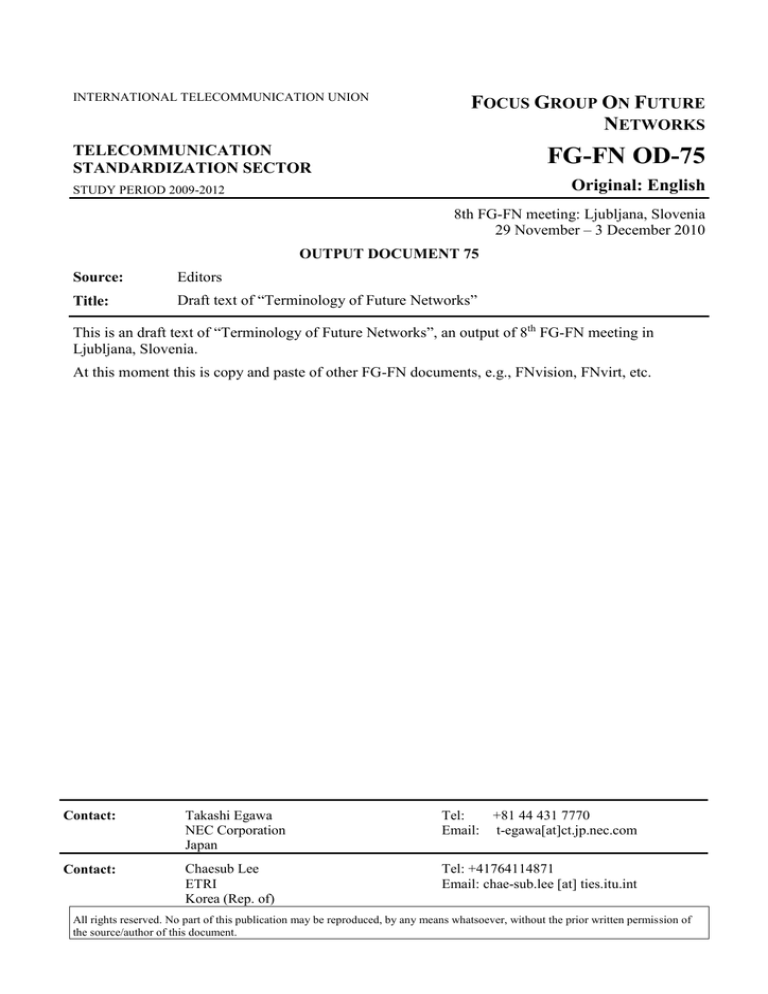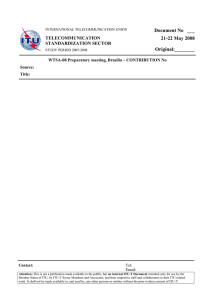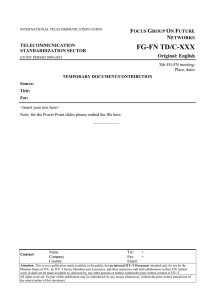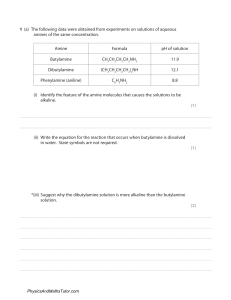
INTERNATIONAL TELECOMMUNICATION UNION
FOCUS GROUP ON FUTURE
NETWORKS
TELECOMMUNICATION
STANDARDIZATION SECTOR
FG-FN OD-75
Original: English
STUDY PERIOD 2009-2012
8th FG-FN meeting: Ljubljana, Slovenia
29 November – 3 December 2010
OUTPUT DOCUMENT 75
Source:
Editors
Title:
Draft text of “Terminology of Future Networks”
This is an draft text of “Terminology of Future Networks”, an output of 8th FG-FN meeting in
Ljubljana, Slovenia.
At this moment this is copy and paste of other FG-FN documents, e.g., FNvision, FNvirt, etc.
Contact:
Takashi Egawa
NEC Corporation
Japan
Tel:
+81 44 431 7770
Email: t-egawa[at]ct.jp.nec.com
Contact:
Chaesub Lee
ETRI
Korea (Rep. of)
Tel: +41764114871
Email: chae-sub.lee [at] ties.itu.int
All rights reserved. No part of this publication may be reproduced, by any means whatsoever, without the prior written permission of
the source/author of this document.
-2FG-FN OD-75
Terminology of Future Networks
Summary
This document describes the Future Network specific terms by copying the definitions defined in
other FG-FN documents.
EdNote: One possibility of future shape of this document is, terms are defined in this document and
other documents refer this document, i.e., do not define by themselves.
1. Scope
This document describes the future network specific terms.
2. Definition
3.1 Component network: Consists of a single homogeneous network, which, by itself, may not
provide a single end-to-end global telecommunication infrastructure.
3.2 Energy-saving of networks: A network capability that use less energy than conventional
networks.
3.3 Federation: A technology that enables a heterogeneous collection of component networks to
be operated as a single network, while the networks are geographically dispersed and managed by
different providers.
3.4 Future Network (FN): A network able to provide revolutionary services, capabilities, and
facilities difficult to provide using existing network technologies.
A Future Network is either:
a) A new component network or an enhanced version of an existing one, or
b) A federation of new component networks or a federation of new and existing component
networks
Notes:
1 A network of type b may also include networks of type a.
2 The label assigned to the final federation may or may not include the word “future,” depending
on its nature relative to any preceding network and similarities thereto.
3 In the context of this document, the word “new” applied to a component network means that
the component network is able to provide revolutionary services, capabilities, and facilities that are
difficult or impossible to provide using existing network technologies.
3.5 Future Networks (FNs): The plural form of Future Network, this is usually used to show that
there may be more than one network that fits in the definition of Future Network.
3.6 logically isolated network partition (LINP): A network of physical or logical partitions of
network resources and is separated from other LINPs. LINP can expand its capabilities by
aggregating multiple physical or virtual resources.
-3FG-FN OD-75
3.7 Network virtualization: A technology that enables the creation of logically isolated network
partitions over shared physical network infrastructures so that multiple heterogeneous virtual
networks can simultaneously coexist over the shared infrastructures. Also, network virtualization
allows the aggregation of multiple resources and makes the aggregated resources appear as a single
resource.
3.8 Service Universalization: A process to provide telecommunication services to every individual
or group of people irrespective of location or economic circumstances.
3.9 Virtual resource: A logical resource that has the same mechanism as physical resource
associated with networks and can inherit all existing mechanisms and tools for physical resource.
Bibliography
[b-ITU-T FG-FN FNvision] D. Matsubara and M.Shin, “Future Networks: Objectives and Design
Goals,” ITU-T Focus Group on Future Networks , FGFN-OD72, December 2010.
[b-ITU-T FG-FN NWvirt] S. Jeong and H. Otsuki, “Framework of Network Virtualization,” ITU-T
Focus Group on Future Networks , FGFN-OD73, December 2010.
[b-ITU-T FG-FN Energy] T. Kurita, “Overview of Energy Saving of Networks”, ITU-T Focus
Group on Future Networks , FGFN-OD74, December 2010.





